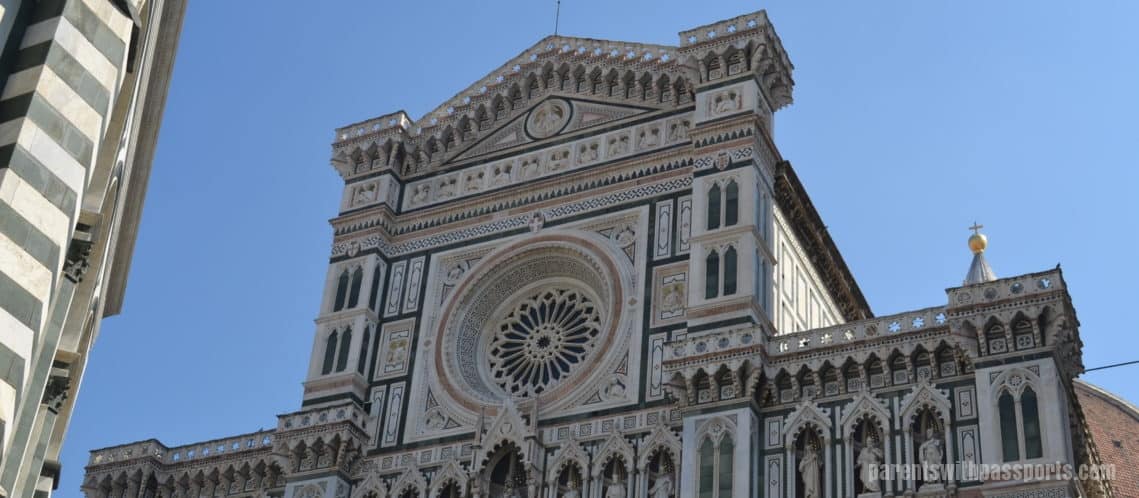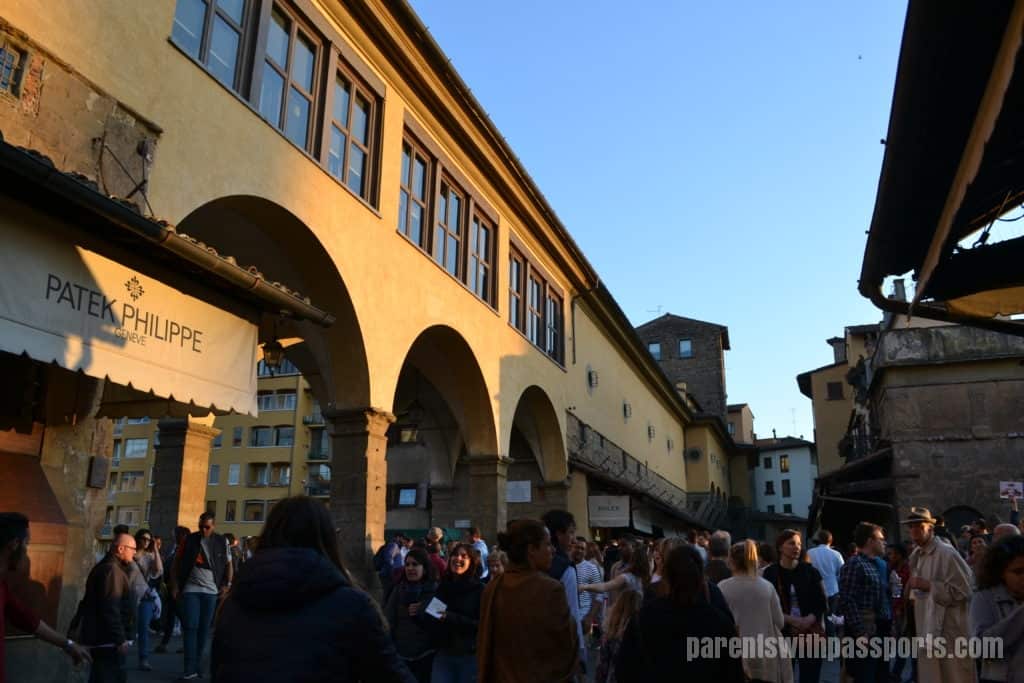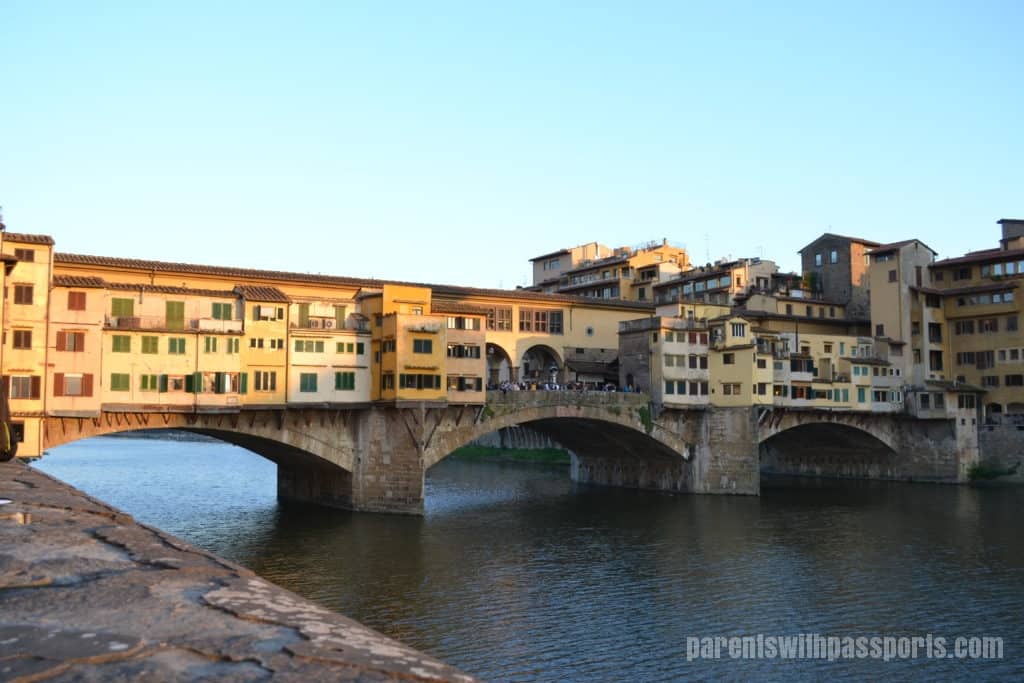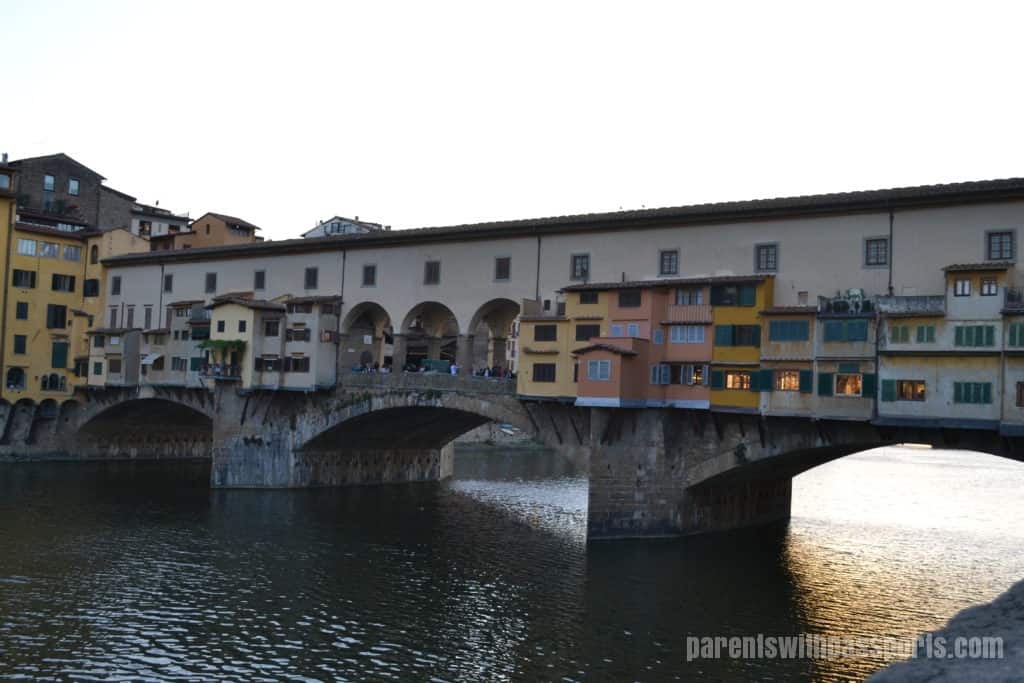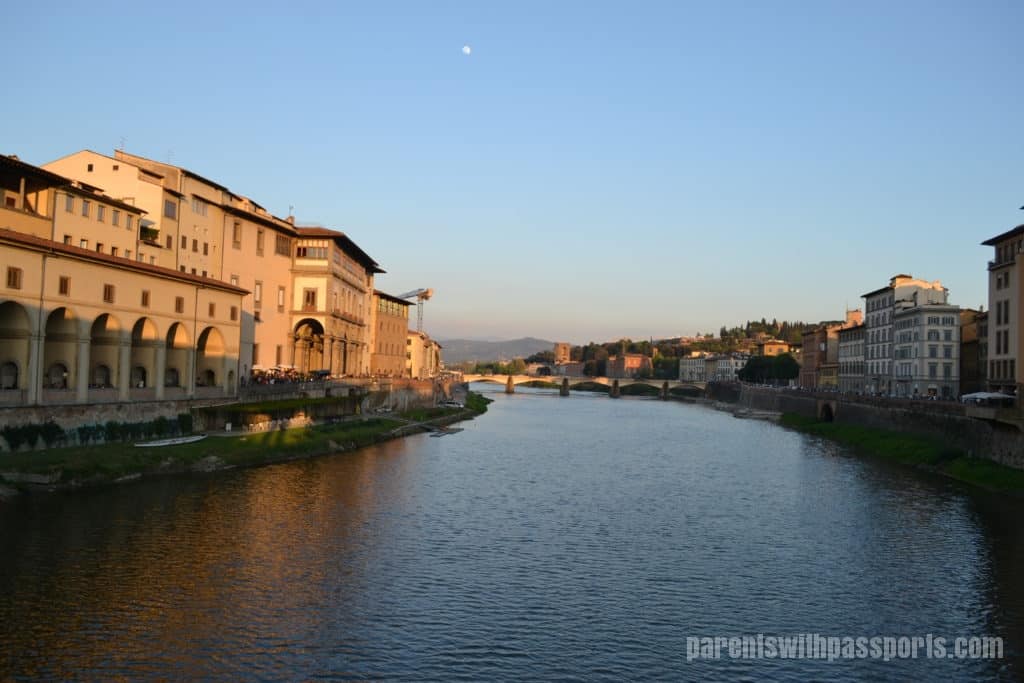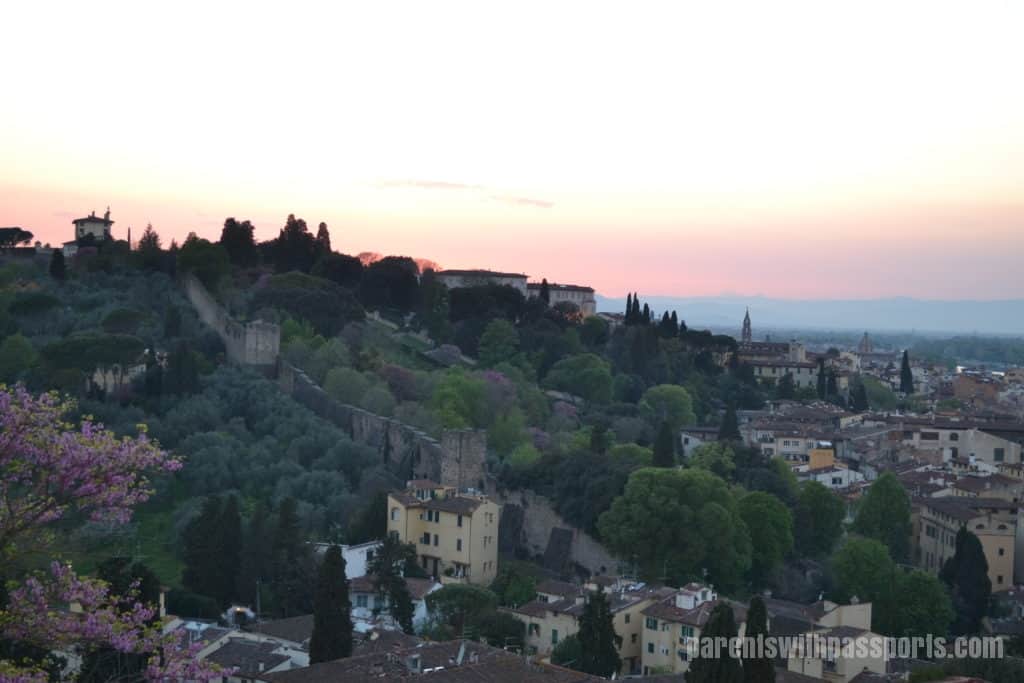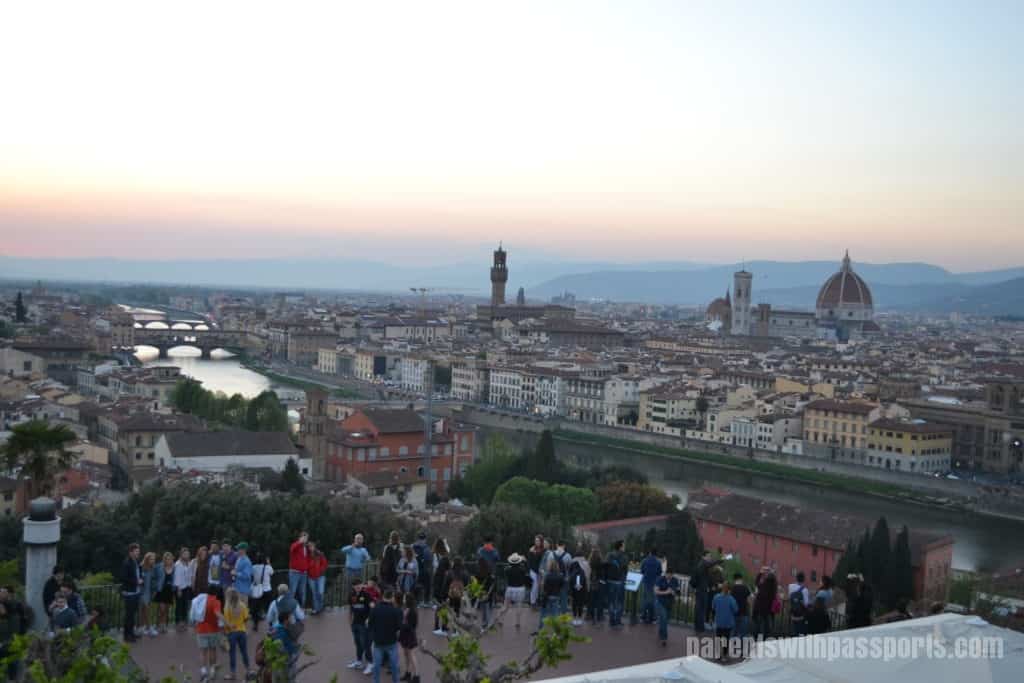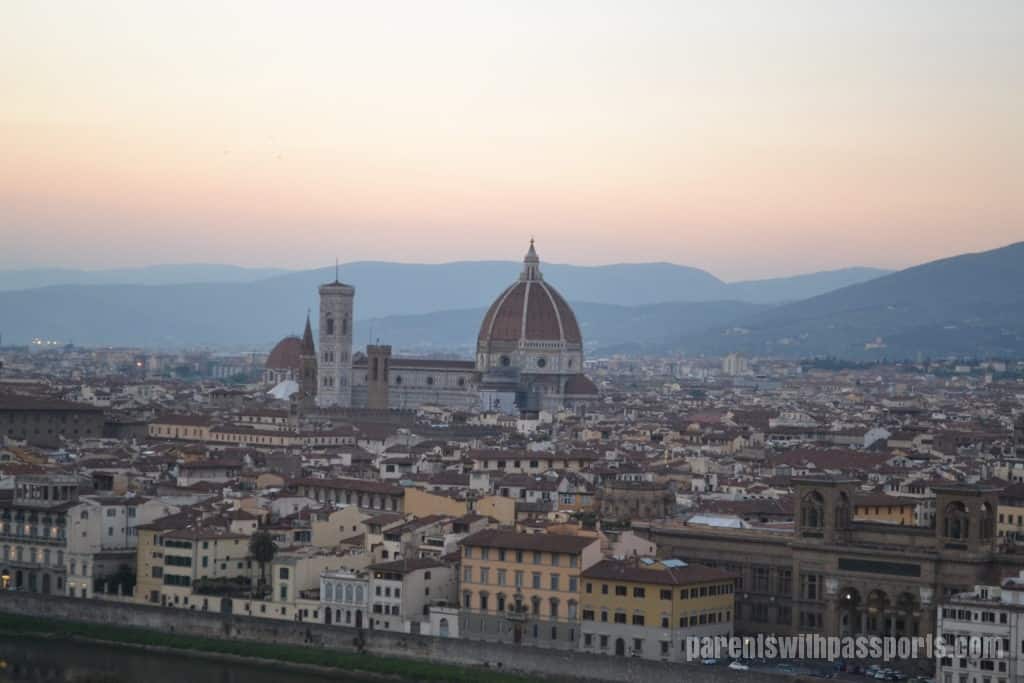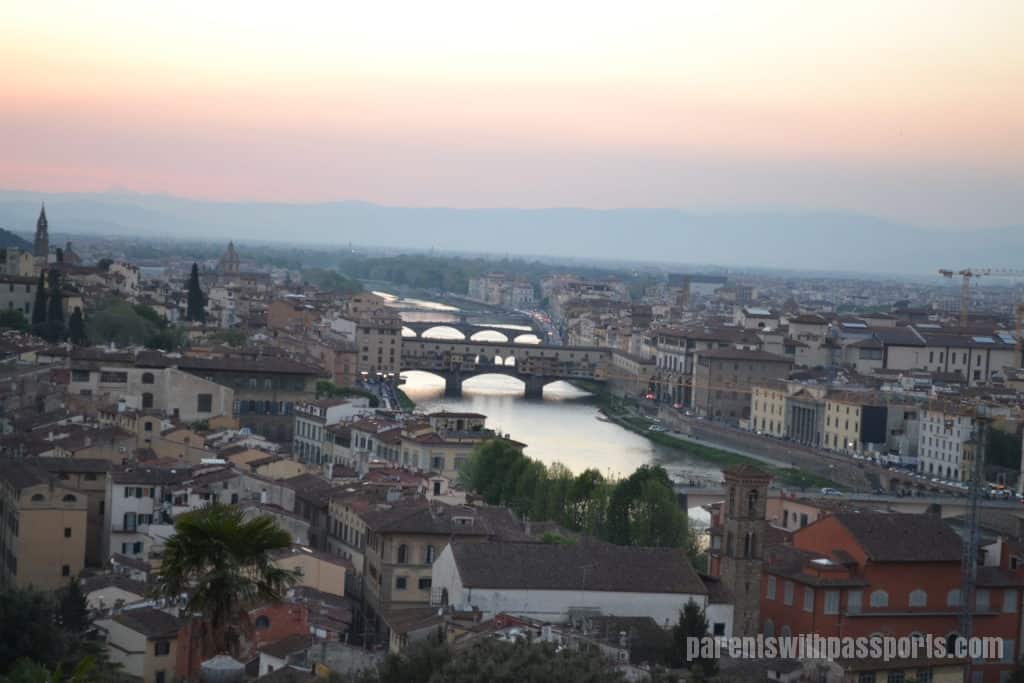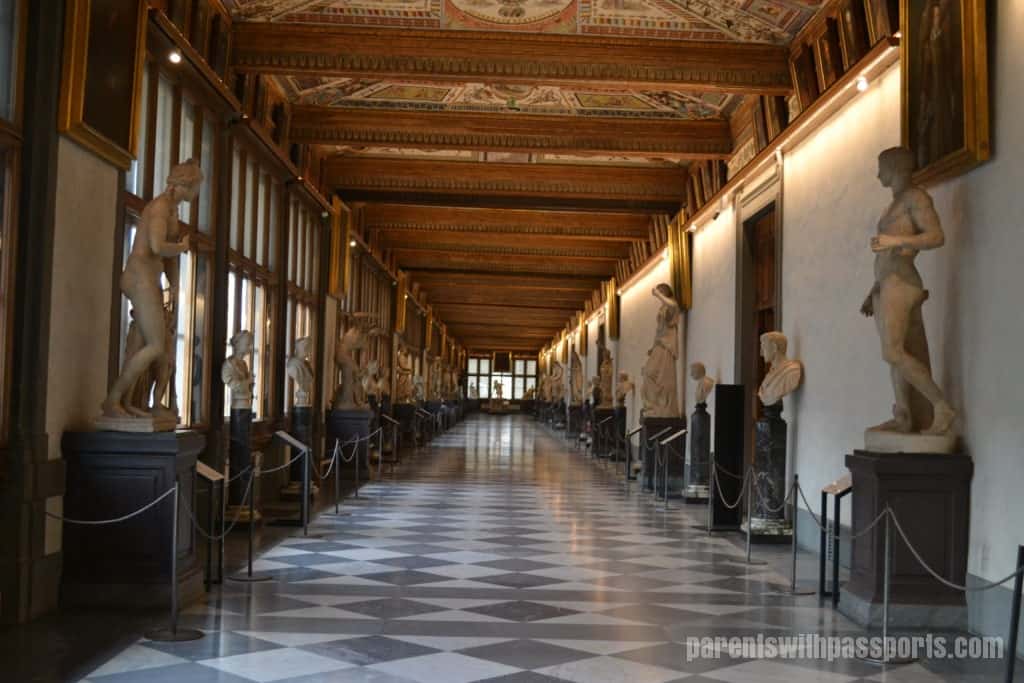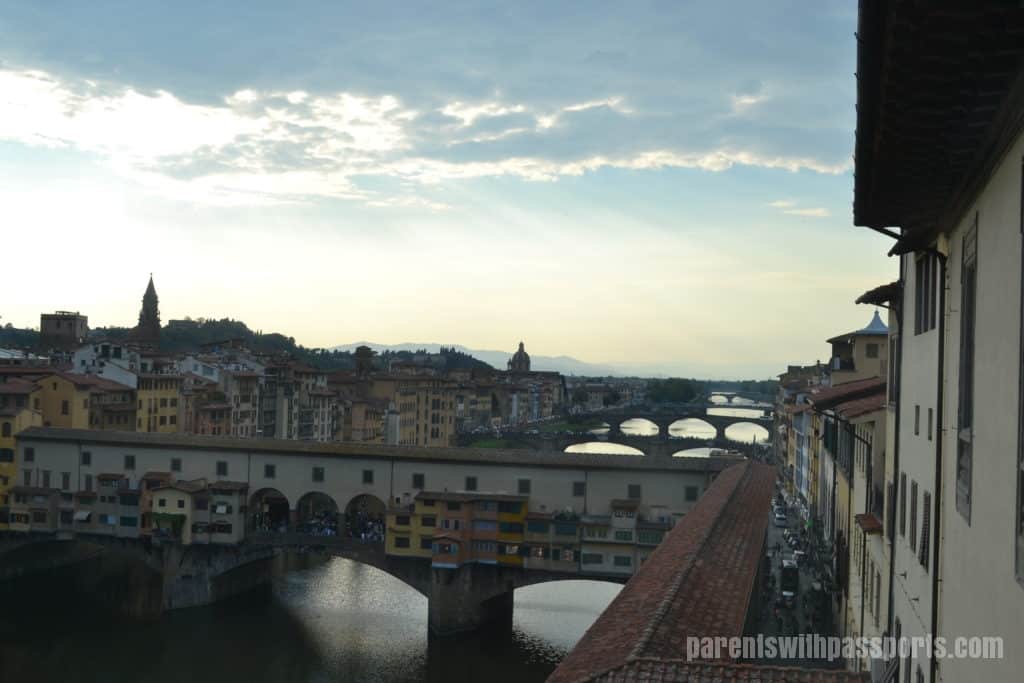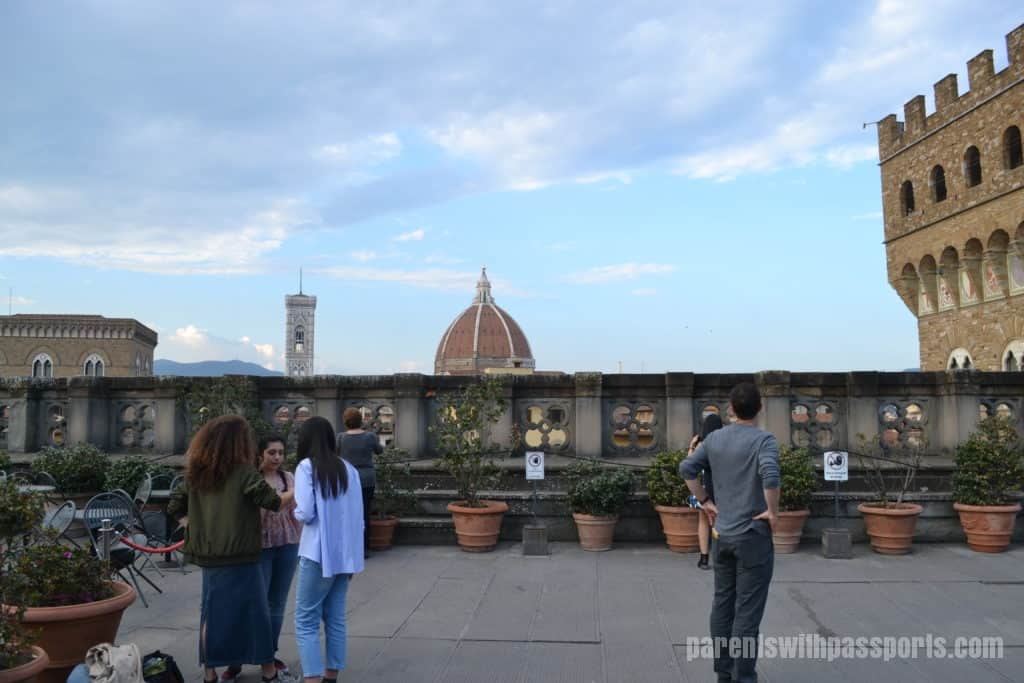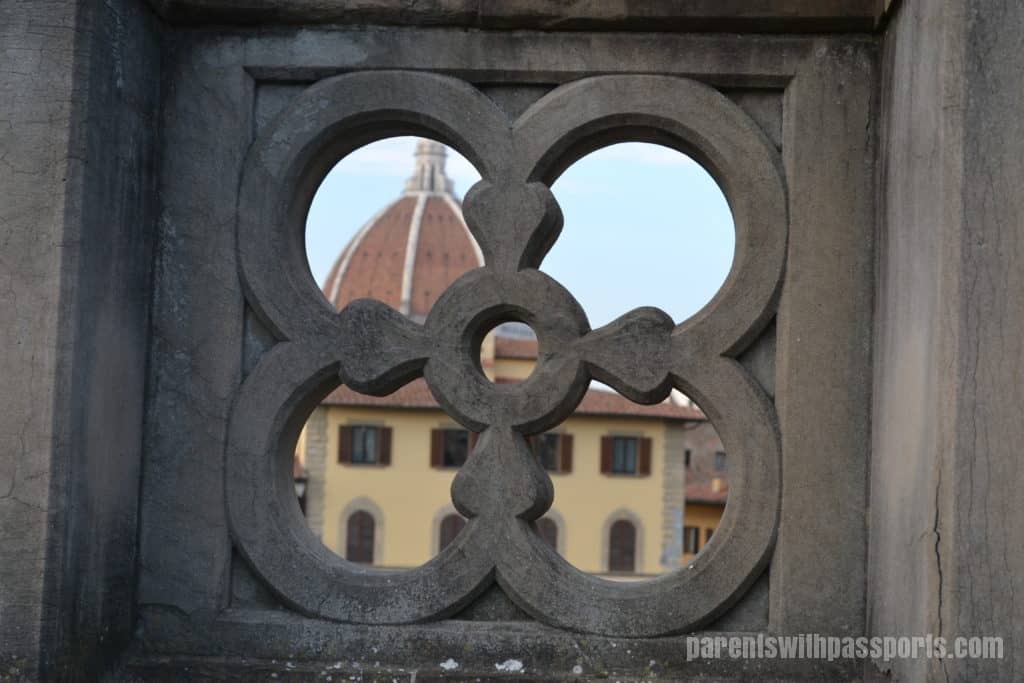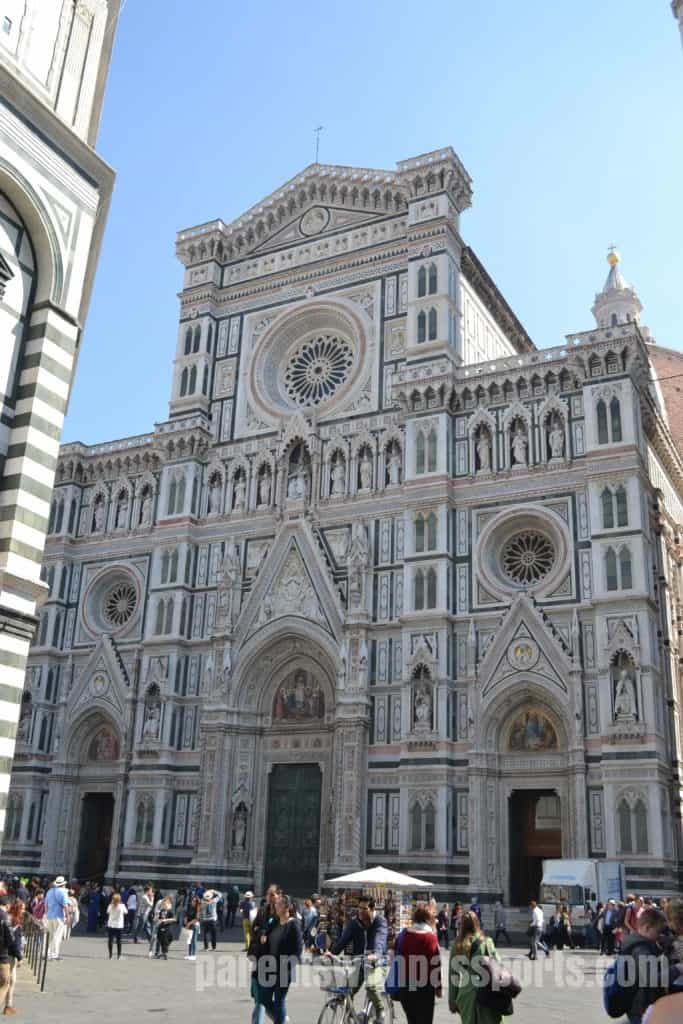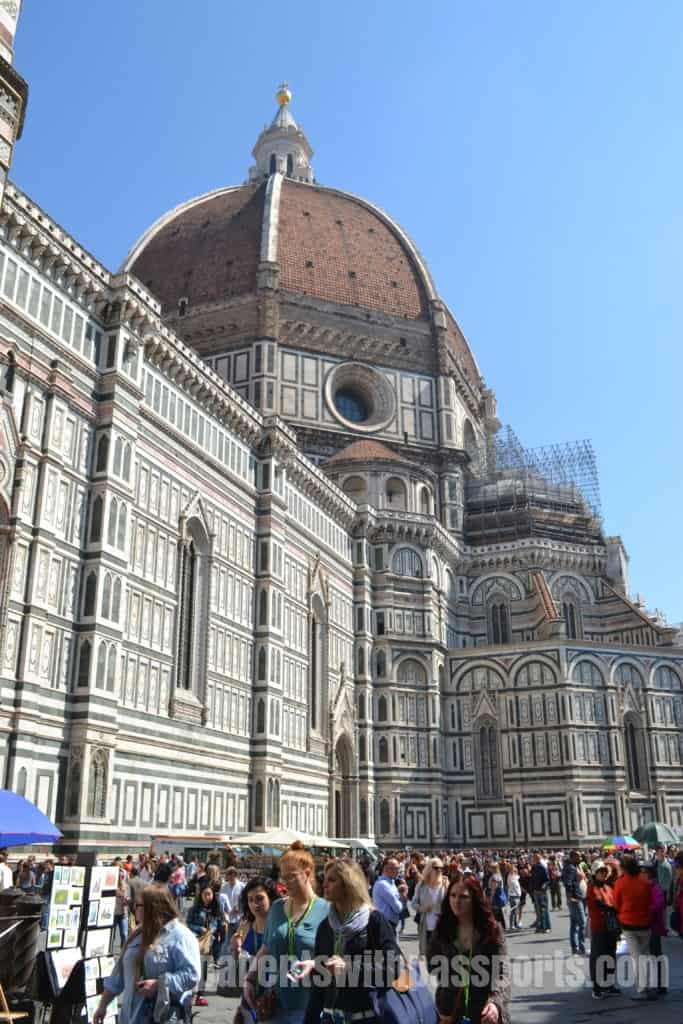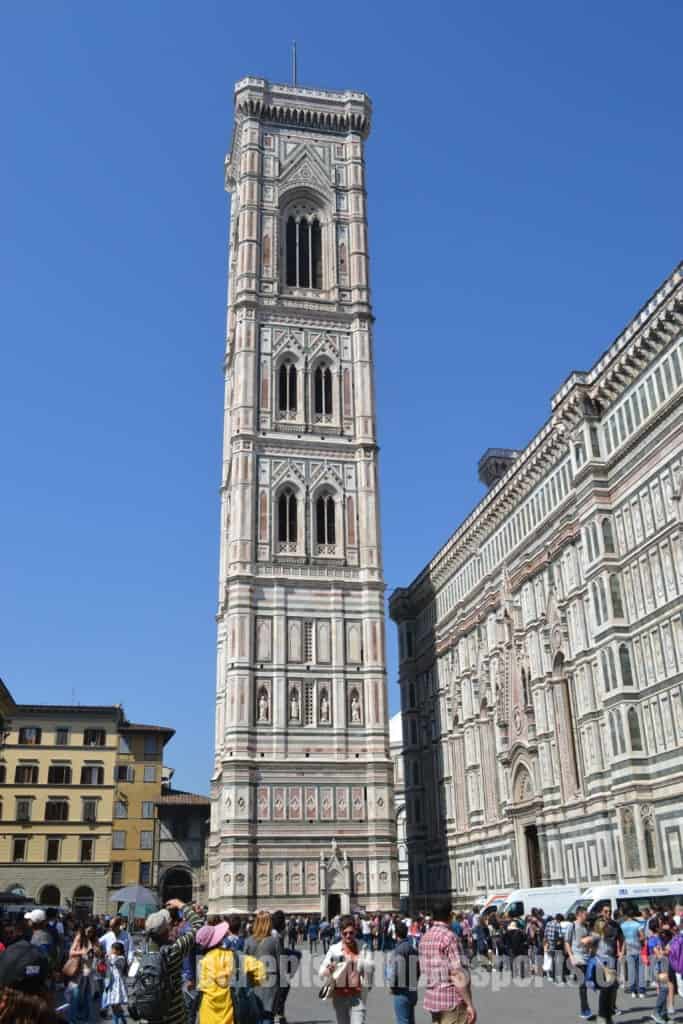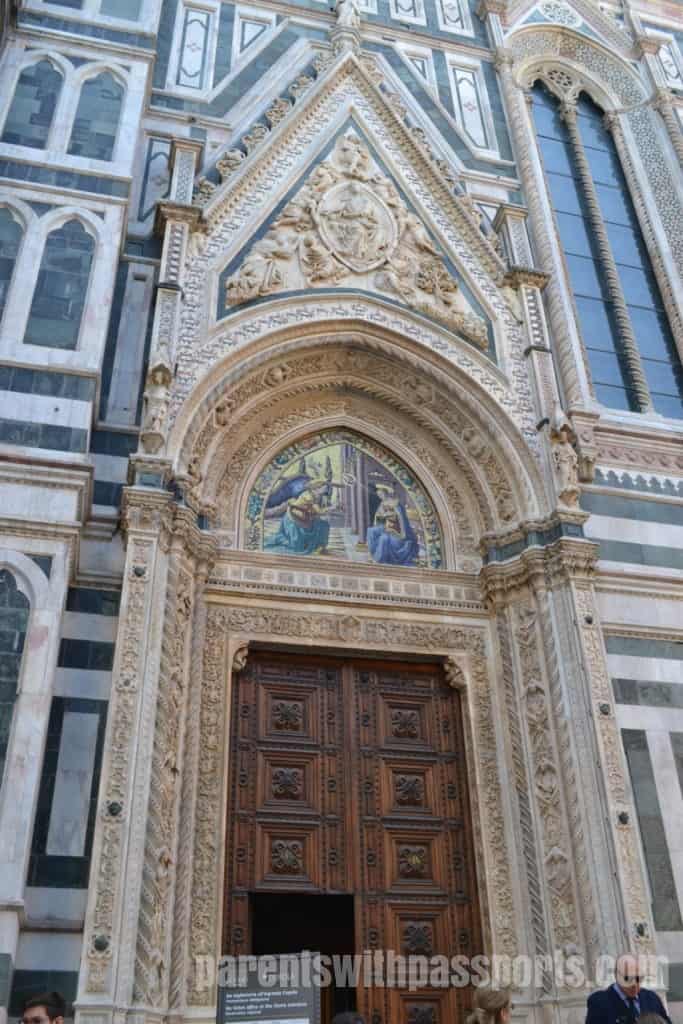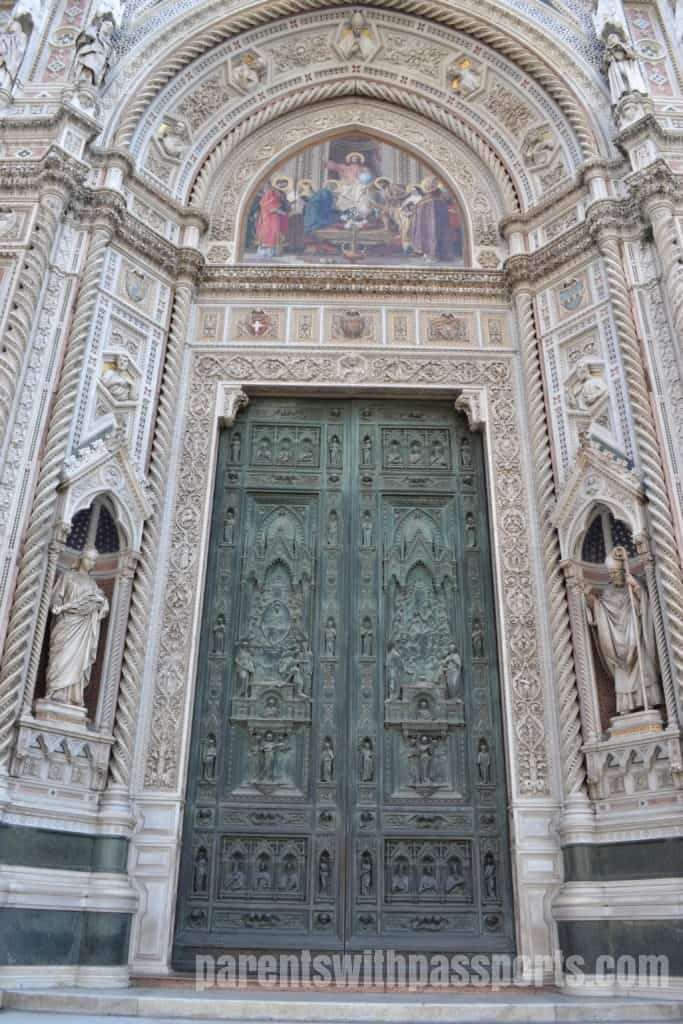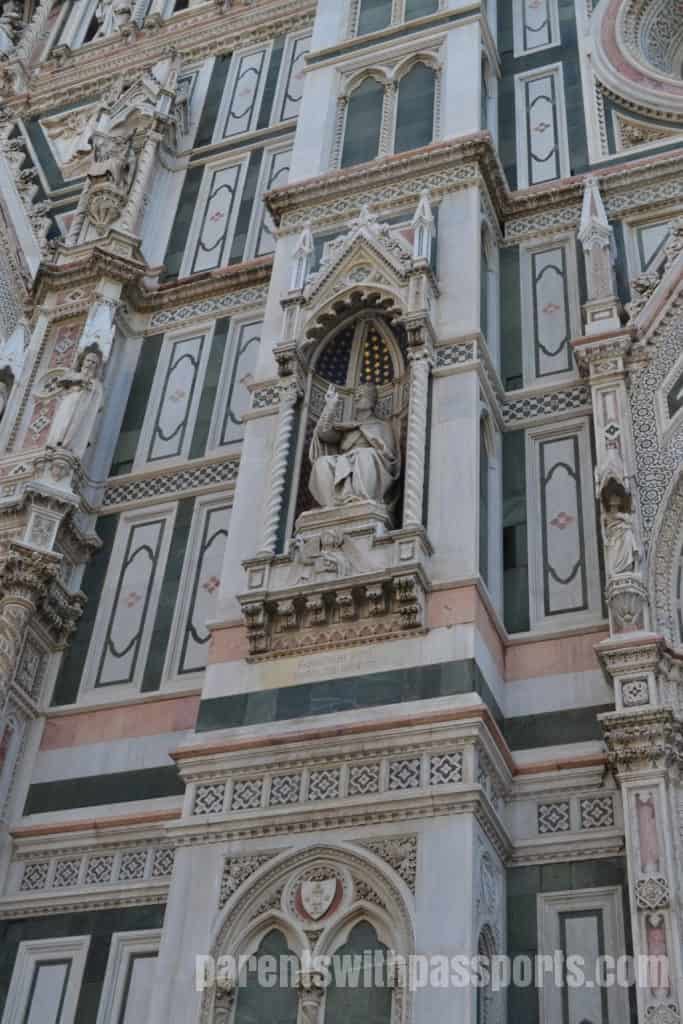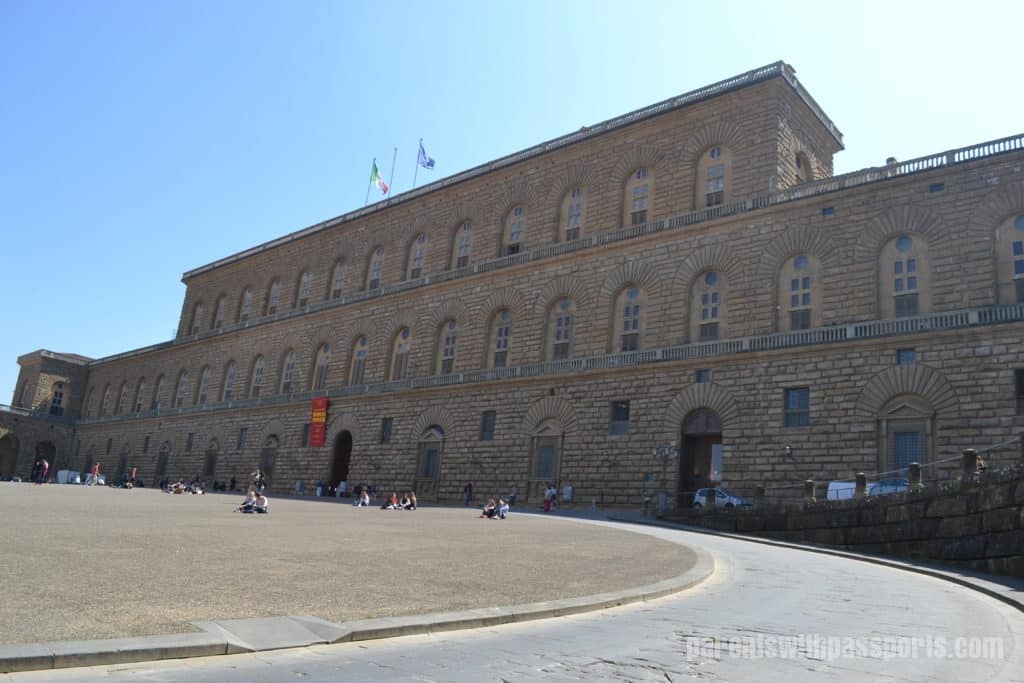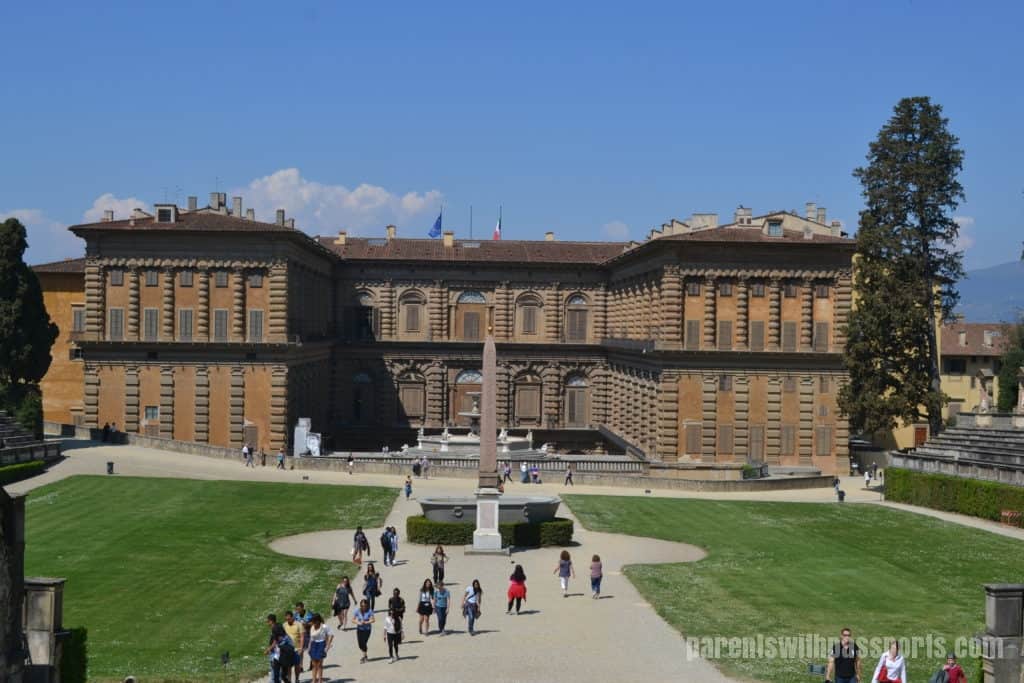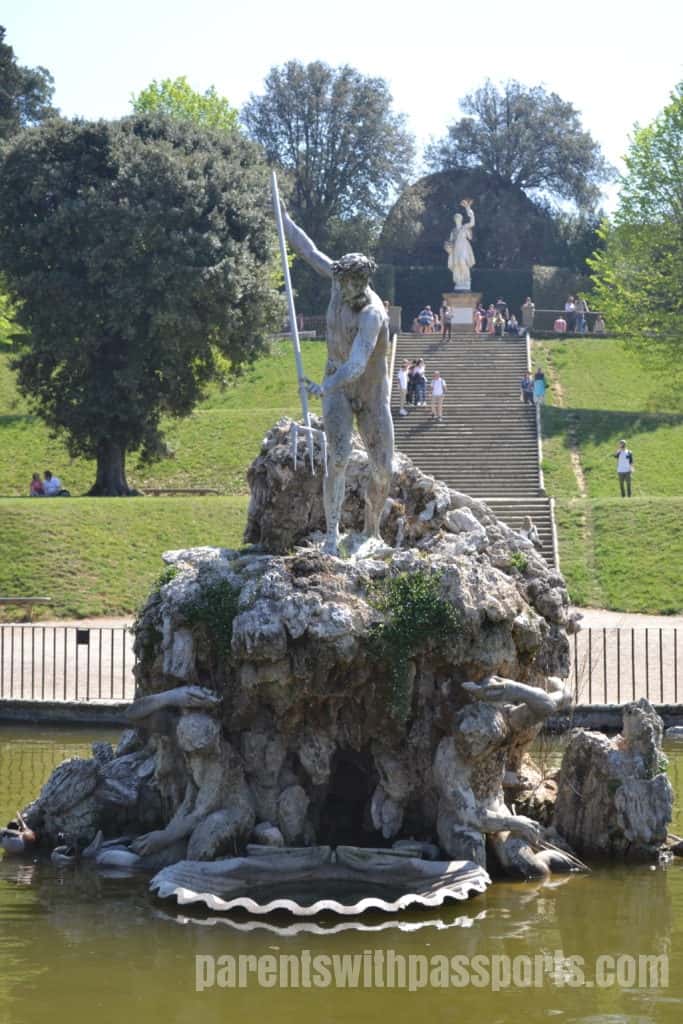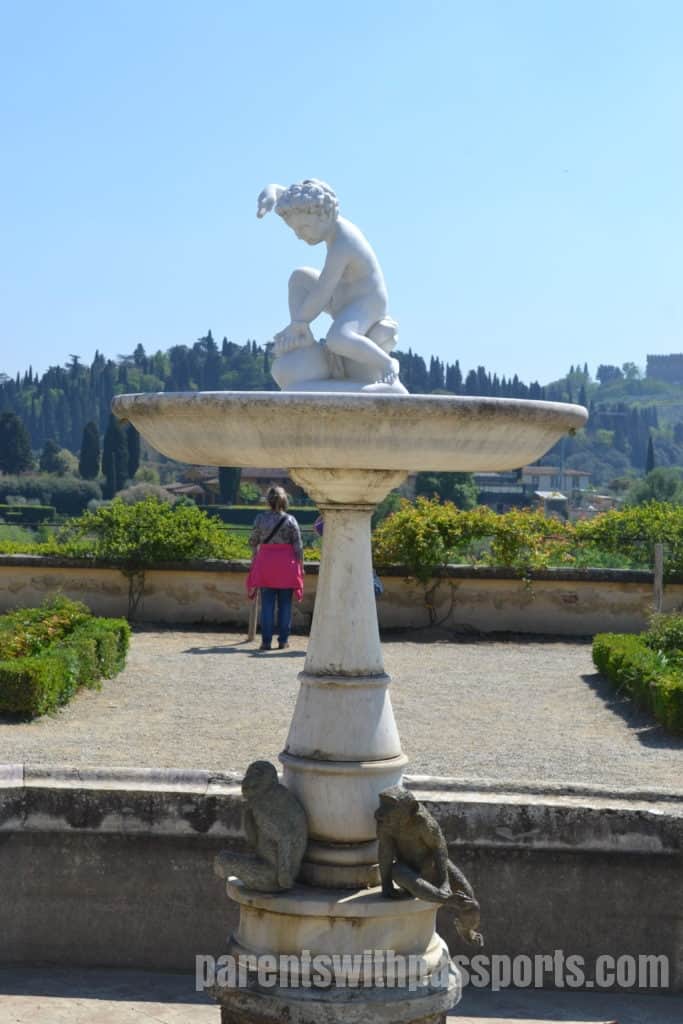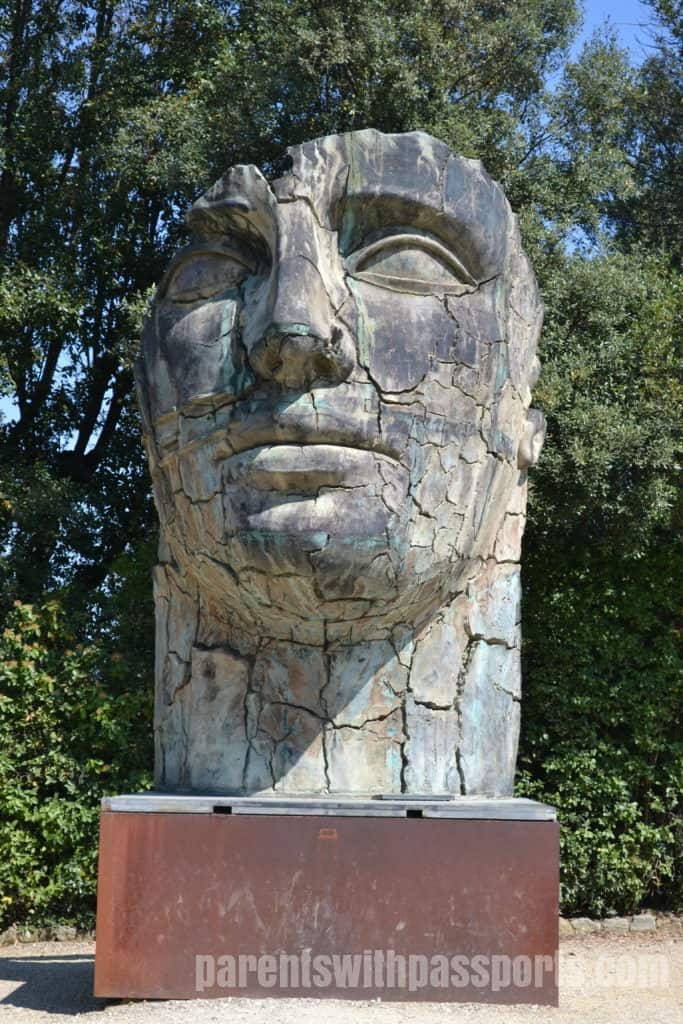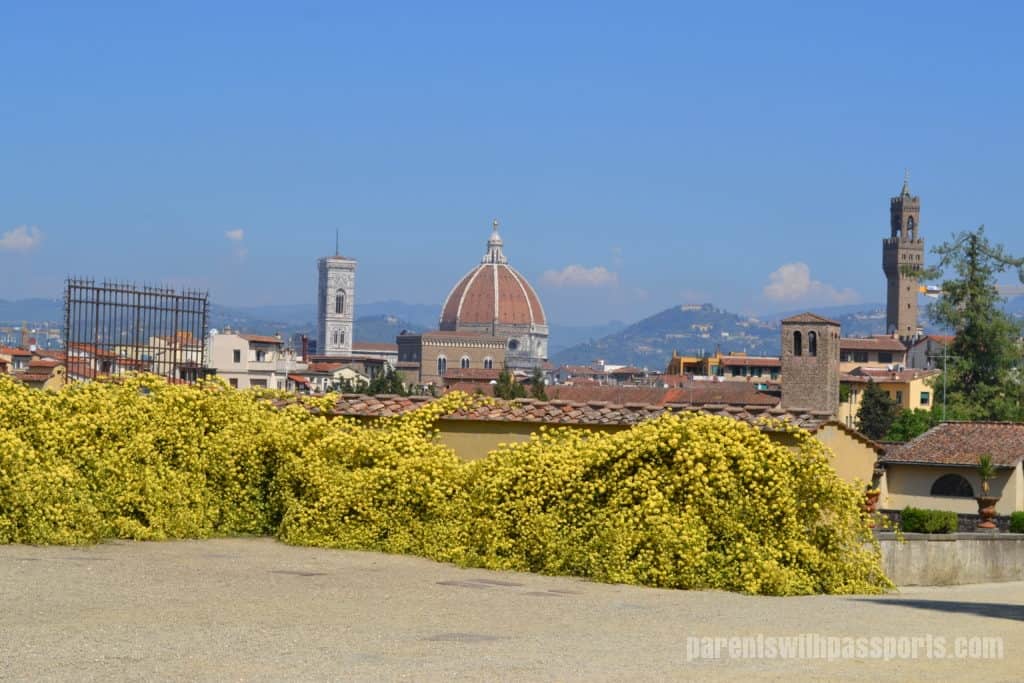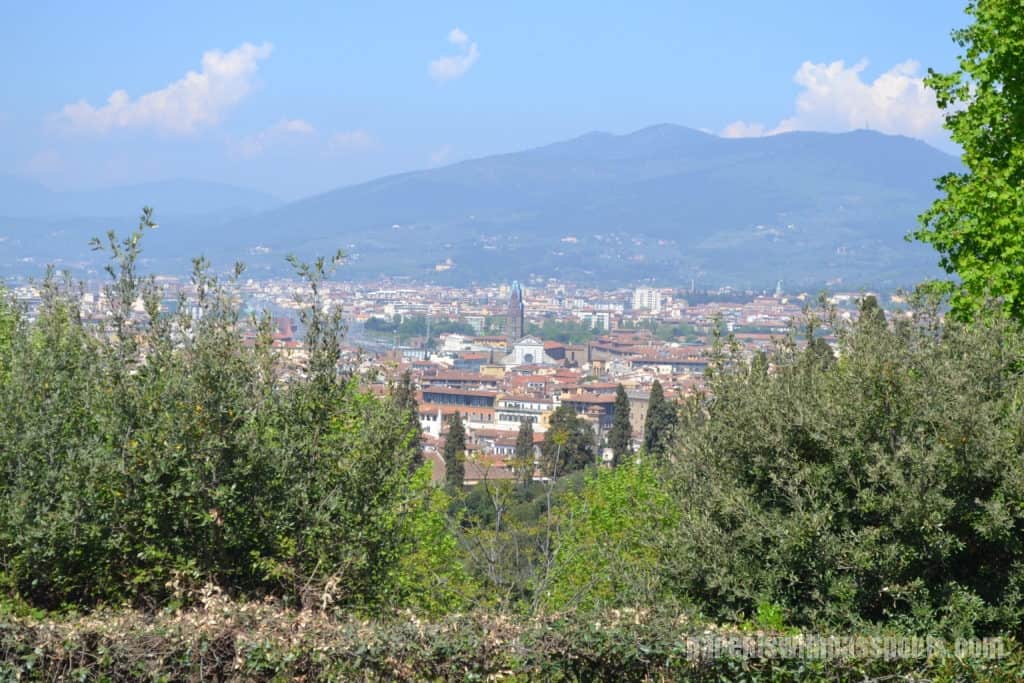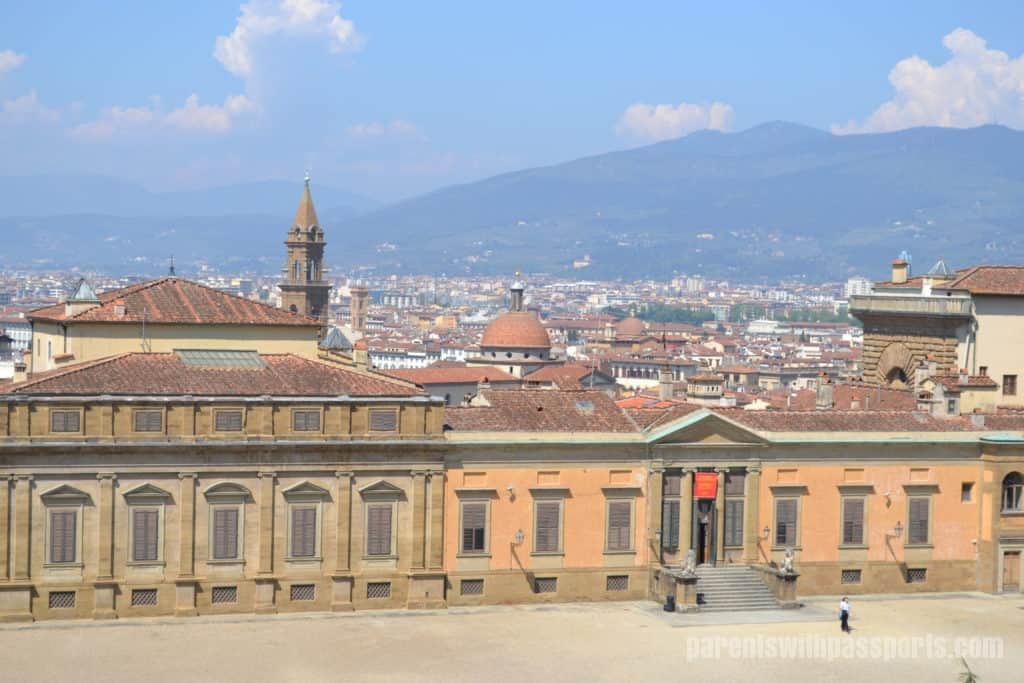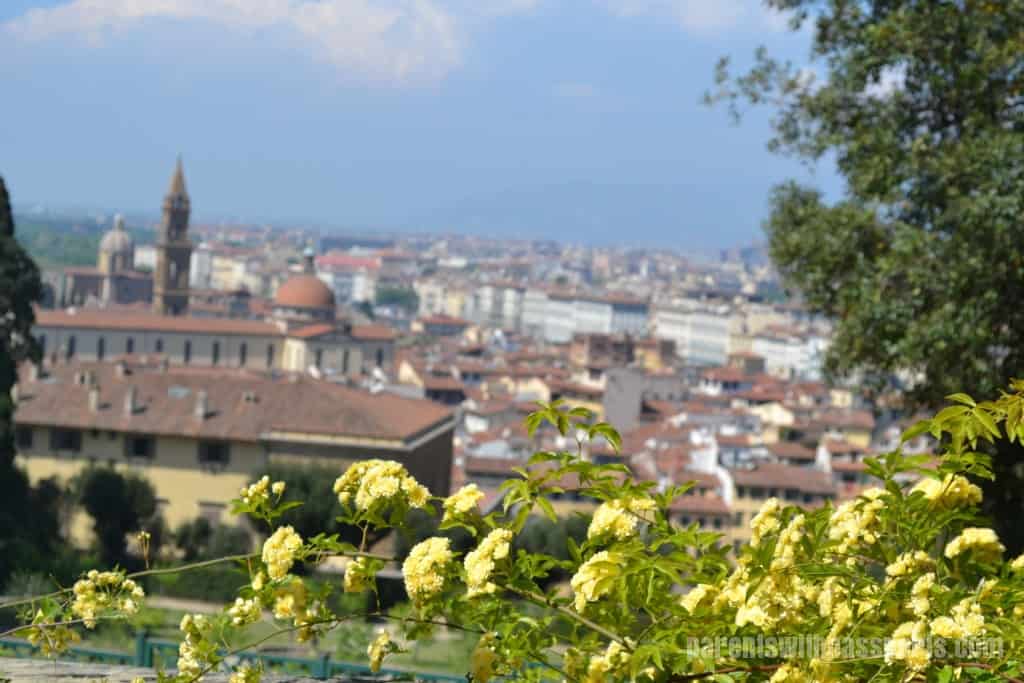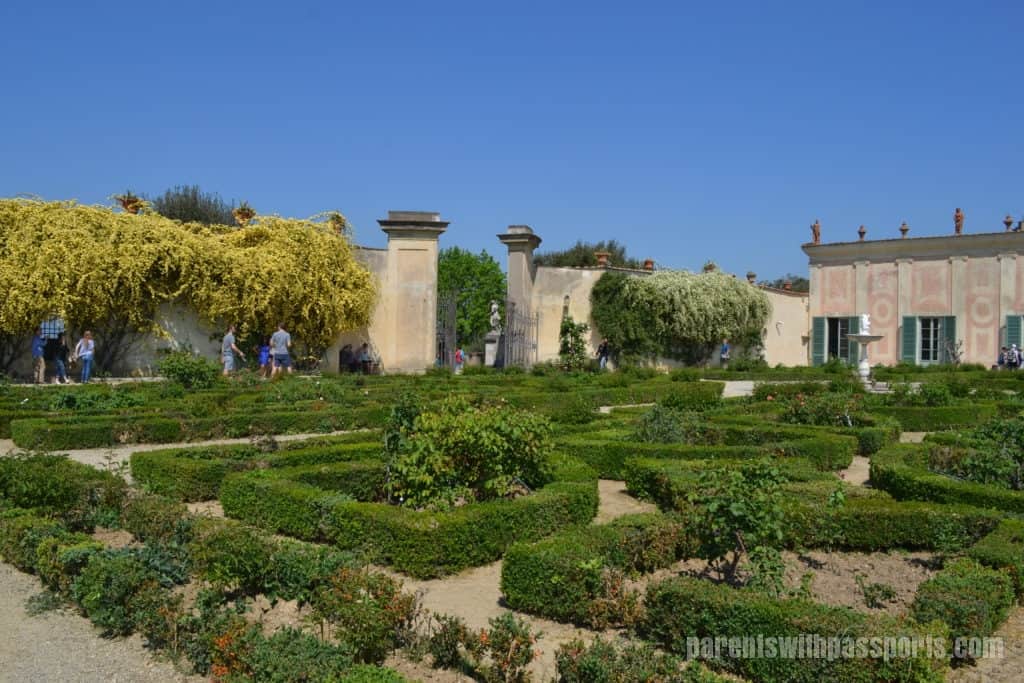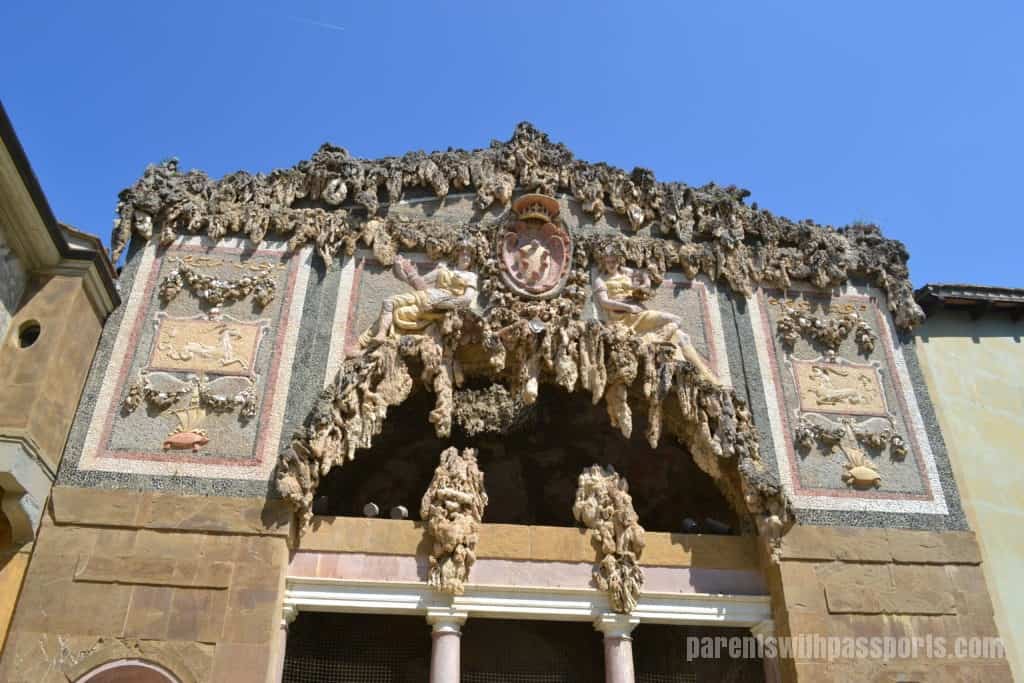We took the train to Florence after a whirlwind day in Rome. It was a quick and easy hour and a half trip. We checked into the Hotel Porta Rossa a little before 5:30 and then set out to explore the city. We wandered the narrow city streets and explored Ponte Vecchio before deciding to try to make it to the top of Piazzale Michelangelo for sunset.
Ponte Vecchio is Florence’s iconic bridge – a pedestrian bridge across the Arno River known for the jewelry shops that line its sides. The bridge as it is today was built in 1350 and is the third iteration at that location – floods destroyed the original in 1117 and its replacement in 1333. The shops along the bridge were originally butchers shops and tanners but in 1593 Duke Ferdinand decreed that only goldsmiths and jewelers could conduct business there.
Today you will find throngs of tourists buying souvenirs from the street vendors and jewelry from the shopkeepers. It was ridiculously crowded when we were there and since neither cheap souvenirs nor expensive jewelry are my thing, we didn’t stay long. I found the Ponte Vecchio best appreciated for its views – the bridge itself is fascinating to see, with its almost 700 year old shops built out over the edge of the bridge, and it provides a beautiful view down river of the Ponte alle Grazie in one direction and Ponte Santa Trinity in the other. With the sun starting to hang low in the sky, the lighting on both bridges and the buildings along the river was beautiful.
As pretty as the sun setting on the buildings along the river was, we wanted to try to catch the sunset over all of Florence so we had to high tail it to Piazzale Michelangelo. It was a long, hot, uphill walk to get there but absolutely worth it for the views. With the sky changing colors and the mountains in the background, Florence looked stunning.
In our original, before-Beth-missed-the-flight-to-Rome plans, we had planned to arrive early in Florence and spend our first day visiting different art galleries. We were to arrive early Saturday, take a winery tour on Sunday, and explore the city on Monday. Arriving in the evening on Saturday instead of the morning put a major kink in our plans. We had already booked and paid for the wine tour on Sunday and the galleries were all closed on Mondays. It seemed like such a shame to come to Florence, a bastion of Renaissance art, and not get to see any works of da Vinci or Michelangelo. Back at our hotel that night, we checked the time of our winery tour, cross-referenced it with the hours of the different galleries in the city, and determined that we could squeeze in some time at the Uffizi Gallery after our Tuscany wine tour.
And that’s exactly what we did. I had heard nightmares of waiting on line for up to 5 hours just to get into the Uffizi, only to end up shoulder to shoulder with thousands of strangers trying to get a peek at Botticelli’s The Birth of Venus. The museum closes at 6:50 pm and we arrived a little before 5:30. The line to buy a ticket was less than 10 minutes long so we ended up with about an hour and 15 minutes to explore. But here’s the thing… it was almost completely empty. Seriously, this is an empty hallway in the Uffizi on a Saturday in April. Not a (living, non-marble) person in sight.
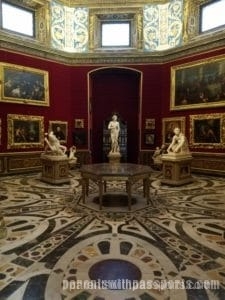
Originally a private museum for the Medici family, the Uffizi and its vast collection of art was gifted to the Lorraine family in 1743 with the condition that the whole collection remain intact and that it always stayed in Florence. In 1769, the family opened it to the public. We roamed the halls and rooms of the gallery, following the progression from Medieval to Renaissance art. In addition to the impressive collection of paintings and sculptures, the building itself is a work of art in many places, most notably La Tribuna. This octagonal room houses some of the Medici’s favorite pieces, but the opulently decorated room is as much a focus of attention as the art. The four elements are represented in the amazing details: the walls are covered in red velvet (fire), the domed ceiling is lined with thousands of mother-of-pearl shells (water), the marble floor flower mosaic (earth), and a weather vane in the lantern at the top of the dome (wind).
The Uffizi also boasts an amazing view of the city. You can look down on the river and Ponte Vecchio from the windows at the west end of the gallery or see the Duomo from the cafe’s terrace.
So the gallery portion of our trip all worked out in the end. While our time was shorter than we probably would have wanted, we were able to see way more than we would have in 4 hours in the middle of the day.
We had one last day in Florence and wanted to explore the city some more and headed to the Duomo. While we got lucky with the Uffizi, I learned the lesson the hard way that Florence is a city where you have to book things in advance. Don’t think you can just show up, hop in a line, and climb up the dome. Tickets are required and specify an entrance day and time. And don’t think you can just show up in the morning and buy a ticket for later that day. They will laugh at you. Disheartened, we wandered around enjoying the amazing cathedral from the outside and came up with a plan B.
You don’t need to go into the dome to realize how impressive the cathedral is. While the dome itself is clearly an impressive architectural feat, the exterior of the cathedral cannot be overlooked. The pink, green and white marble facade is simply stunning. From the geometric pattern to the impressive bronze doors to the dozens of statues built into the facade, you could spend hours just examining the details of the outside of the building.
After taking time to appreciate the splendor of the Florence Cathedral, we walked to the Pitti Palace to explore the grounds. The palace itself is a somewhat boring stone structure, but the Boboli gardens found behind it are sweeping and beautiful. We focused on the outside of the palace and bought a ticket to the gardens only, but there are also several important museums inside.
The Boboli Gardens were started in the 15th century and expanded for almost 4 centuries. The gardens are adorned with fountains and sculptures, making it part park and part outdoor art gallery.
It was hot walking around the gardens but well worth it. Things were not in full bloom yet but the grounds were gorgeous and the art added unique and interesting touches. It was a nice way to wrap up our visit to Florence.
